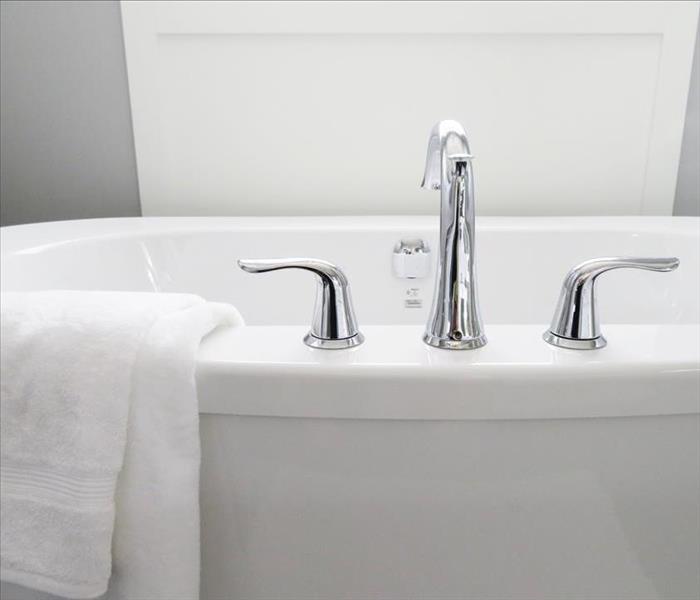How Do I Inspect My Water Heater In Grand Rapids?
8/10/2021 (Permalink)
No one likes going without hot water, especially when it happens unexpectedly. Your water heater can stop working with little notice, leaving you with an uncomfortable situation!
One of the best ways to avoid this kind of experience is to inspect your water heater regularly. This practice will help you stay on top of any maintenance issues and make replacements or repairs ahead of time, allowing you to avoid leaks, drips, and water damage.
What Should I Look For When I Inspect My Water Heater?
- Find the age of your unit by looking for the serial number on the manufacturer sticker on the upper portion of the water heater. Each manufacturer has a similar date code, and they can vary, so check the manufacturer's website to date your machine. If your water heater is more than ten years old, you may want to consider replacing it, especially if its location means a leak will cause you water damage.
- If you see rusty water coming from the hot side piping in your home, this is a sign that your water heater is rusting away on the inside and may begin to leak soon. Test first to see if it is coming from galvanized pipes, if you have those, by draining a few buckets of hot water from the water heater. If the water gradually clears, it isn't your water heater.
- Sediment will build up at the bottom of your water heater tank over time. As the sediment is heated and reheated, it eventually will harden and cause rumbling noises to develop; that is another sign that your water heater needs to be replaced soon to avoid water damage from leaks.
- If you notice moisture around your water heater, you may have a small leak or a fracture in the tank.
What Do I Do If I Find An Issue During The Inspection Of My Grand Rapids Water Heater?
If you are concerned about the failure of your water heater or if you discover any signs of trouble:
- Try not to panic
- Make sure you know exactly where the leak originates
- Turn off the water to your water heater unit
- Drain the tank if you are confident you can do this safely:
- Open some of your hot water taps around the house, preferably those located on floor levels above the heater
- Locate the drain valve near the bottom of your water heater
- Attach a garden hose to the drain valve and run the hose to a place it can drain safely, like a floor drain or your driveway
- Open the drain valve and let the water start flowing. Generally, this step takes 10 minutes or less
- Once the tank is empty, disconnect the hose and close both the drain valve and the hot water taps you opened in the first step
- Call a plumber
- Call your restoration specialist if you have experienced water damage
We are always ready to help you if water damage occurs in your home or business. Our SERVPRO of South and Northwest Grand Rapids technicians are highly trained and skilled in all types of restoration and cleanup projects, including mold remediation - which is often an unfortunate and unpleasant side-effect of water leaks.
We can get your home or business Certified: SERVPRO Cleaned, as well. Ask us how!
This franchise is Independently Owned and Operated.




 24/7 Emergency Service
24/7 Emergency Service
